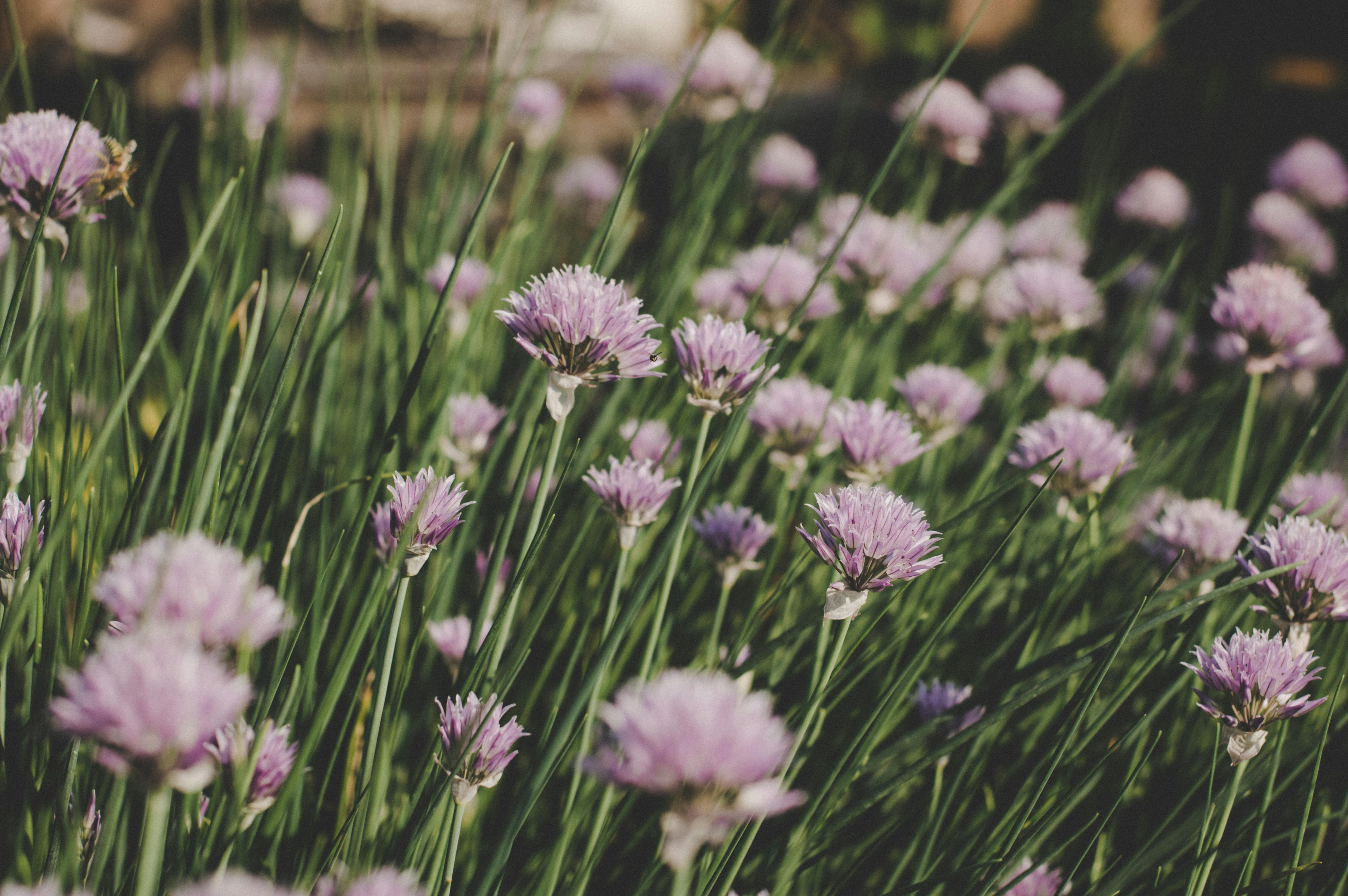Are strawberry plants annuals or perennials? This is a common question among gardeners as strawberries are a popular fruit crop to grow. Annuals and perennials refer to the lifespan of a plant, with annuals living and producing for one season only, while perennials will come back year after year. The answer to this question depends on the variety of strawberry that is being grown.Strawberry plants are a type of flowering plant which produce small, edible fruit. The fruit is usually bright red in color and has a sweet flavor. Strawberry plants are native to Europe, North America, and parts of Asia. They require full sun and plenty of water to grow successfully.
Are Strawberry Plants Annuals or Perennials?
Strawberry plants are usually classed as perennials, meaning they can remain in the same place for several years. However, strawberry plants tend to produce the best yields when they are replaced every few years. This is because young strawberry plants have larger, more flavorful fruit and will produce a greater yield than older plants.
Strawberries can also be grown as annuals, meaning they are planted and harvested within one growing season. Annual strawberries will not provide a second year of production, but can be used if you want to change your variety of strawberries each season or need to fit them into a specific space in your garden.
Overall, it is best to consider strawberry plants as perennials that should be replaced or refreshed every few years for optimal yield and flavor. Planting annual strawberries can be a great way to experiment with different varieties without having to commit to a long-term planting plan.
No matter which type of strawberry you choose, take care when planting them and provide plenty of sunshine and water for the best possible harvest!
Nutritional Benefits of Growing Strawberry Plants
Strawberries are one of the most nutritious fruits available. They are packed with vitamins, minerals, and antioxidants, making them a great choice for those looking to improve their diet. Growing your own strawberry plants can provide you with an easy and convenient way to get these essential nutrients in your diet. Not only are they tasty, but they also provide a range of health benefits that can help you feel your best.
One of the main nutritional benefits of growing strawberry plants is their high vitamin C content. Vitamin C is an essential nutrient for maintaining good health and boosting immunity, and strawberries are a great source of this vital nutrient. Vitamin C helps your body to absorb iron more efficiently and supports healthy skin and bones. Additionally, strawberries are rich in dietary fiber, which can help support digestion and regularity.
Strawberries also contain several other important vitamins and minerals such as folate, potassium, manganese, magnesium, phosphorus, and copper. These minerals help support healthy heart function by helping to reduce cholesterol levels in the body and promoting proper blood circulation. Additionally, strawberries contain several antioxidants that help protect against damage caused by free radicals that can lead to chronic diseases such as cancer and heart disease.
Finally, growing your own strawberry plants can provide you with a convenient way to get these beneficial nutrients into your diet without having to buy expensive store-bought varieties. Strawberries are relatively easy to grow in most climates and require minimal care once established. You can also use organic methods such as composting or mulching to provide additional nutrients for your plants if needed. Growing your own strawberries allows you to enjoy fresh fruit all year round without having to worry about pesticides or other contaminants found on store-bought varieties!
June-bearing
June-bearing strawberries are the most common type of strawberry plants and produce a single large crop each year, typically in late spring or early summer. The plants have medium to large foliage and can reach up to a foot in height. They bear an abundance of sweet, juicy fruits that range from deep red to almost black in color. June-bearing plants produce their best yields when planted in full sun and require regular watering during the growing season.
Day-neutral
Day-neutral strawberry plants are more tolerant of temperature fluctuations than other types, making them a good choice for cooler climates. Unlike June-bearing varieties, day-neutral plants put out small crops throughout the season rather than one large one. The fruits are smaller but just as flavorful as those produced by June-bearing varieties. Day-neutral plants require less water than other types and can grow well in partial shade or full sun.
Alpine
Alpine strawberries are a type of evergreen perennial plant that is often used as a ground cover due to its low growing habit and attractive foliage. These plants produce small but intensely flavored fruits with an intense sweetness that is rarely found in larger varieties. Alpine strawberries are often grown as ornamentals due to their attractive foliage and flowers but can also be used for culinary purposes. They prefer full sun and moist soils with good drainage.
Beach
Beach strawberries are native to coastal regions of North America and thrive in sandy soils near the ocean. These hardy plants tolerate salt spray better than most other types, making them an ideal choice for gardens located near bodies of water such as lakes or bays. Beach strawberries produce small, flavorful fruits with an intense sweetness that makes them great for jams and preserves. They prefer full sun and moist soils with good drainage.
Growing Requirements for Strawberry Plants
Strawberry plants require full sun, at least 6 hours of direct sunlight per day, and well-drained soil with a pH between 5.5 and 6.8. They should be planted in the spring after all danger of frost is past, as temperatures below freezing can kill the plants. When planting, it’s important to space the rows at least 18 inches apart and individual plants at least 12 inches apart to allow for air circulation and adequate room for growth. Adding compost or other organic amendments to the soil is beneficial as well.
In order to produce an abundant crop of sweet strawberries, strawberry plants need regular watering and fertilizing throughout the growing season. The soil should be kept evenly moist but not soggy, as overwatering can lead to root rot or other diseases. Fertilizer should be applied every 3-4 weeks during the growing season using a balanced fertilizer such as 10-10-10 or 8-8-8 according to package instructions. Mulching around strawberry plants is also beneficial as it helps keep weeds down and retain moisture in the soil.
When harvested correctly, strawberries are one of the most rewarding fruits to grow in your garden. With proper care and attention, you can enjoy fresh, sweet strawberries right from your own yard!

Planting Strawberries in the Garden
Planting strawberries in the garden is a great way to add flavor and nutrition to your home-grown produce. Strawberries are easy to grow and can be grown in almost any climate, making them an ideal crop for novice gardeners. To get started, you’ll need to select a sunny spot in your garden that has well-drained soil. Once you’ve chosen a spot, prepare the soil by mixing organic matter such as compost or aged manure into it. If possible, try to plant your strawberries at least six weeks before the last frost of the season. This will give them plenty of time to establish themselves before winter sets in.
When planting strawberries, space plants about 12 inches apart and make sure each one is firmly planted in the ground. Water well after planting and throughout the summer months. As your plants grow, you may need to provide additional support such as stakes or cages so they don’t flop over when heavy with fruit.
Strawberries are self-pollinating, so you don’t need to worry about planting different varieties next to each other. However, it is important that you rotate where you plant your strawberries every year as this will help reduce disease and pest issues. Harvest your berries when they are ripe and enjoy them fresh or frozen!
Location
Strawberries require full sun for the best fruit production. Choose a location that gets at least 8 hours of direct sunlight each day. Plant your strawberries in an area that is well-draining and allows for good air circulation. Avoid overcrowding the plants by spacing them 18-24 inches apart. If you are planting rows of strawberry plants, leave 3-4 feet between each row when possible.
Soil Preparation
Before planting your strawberry plants, it is important to prepare the soil. Work organic matter such as compost or manure into the soil to help improve drainage and aeration. Strawberry plants prefer slightly acidic soil with a pH range of 6.0-6.5. Consider having a soil test done to determine the exact pH of your soil and any other nutrient levels that may need to be adjusted.
Watering
Strawberry plants need regular watering during the growing season, especially during hot periods in summer when there is no rainfall. For best results use drip irrigation or soaker hoses to provide water directly at the base of the plant instead of overhead sprinklers which can cause disease problems. Water early in the morning so that foliage has a chance to dry out during the day.
Fertilizing
Fertilize your strawberry plants at least once per year with an all purpose fertilizer such as 10-10-10 or 5-10-5 applied according to package directions around each plant’s root zone. Side dress with an additional application of compost or manure in late spring after flowering begins.
Pruning and Mulching
Pruning strawberry runners helps promote better fruit production and keeps plants from becoming overcrowded. Remove old leaves and flowers as they begin to fade away from the plant as well as any runners that may have started growing off from main plant crowns. Spread a layer of mulch around strawberry plants after they have been planted and watered, this will help reduce weeds as well as conserve moisture in the soil.
Disease Problems
Strawberry plants are susceptible to several diseases, such as leaf spot, powdery mildew, and red stele root rot. Leaf spot is caused by a fungus and can be identified by dark spots on the leaves. Powdery mildew is another fungal disease that can cause white patches to appear on the leaves. Red stele root rot is caused by a soil-borne fungus and can cause wilting and yellowing of leaves. Proper sanitation practices can help prevent these diseases from occurring in strawberry plants.
Pest Problems
Strawberry plants are also prone to pest problems, such as aphids, cutworms, and bird damage. Aphids are tiny sap-sucking insects that can cause distorted growth in the plant. Cutworms are caterpillars that feed on the stems of strawberry plants. Bird damage can occur when birds peck at the fruit or foliage of strawberry plants. Control measures should be taken to prevent or reduce pest infestations in strawberry plants. This may include using insecticides or traps to control pests, netting to protect berries from bird damage, and proper sanitation practices to help prevent pests from entering the area.

Conclusion
Strawberry plants are perennials, meaning they can live for up to three years. They produce fruit each year and can be propagated by division or runners. Strawberry plants can be grown in a variety of climates, from temperate to subtropical, and even in containers. With proper care and maintenance, strawberry plants will continue to produce fruit for many years to come.
Whether you’re looking for a perennial berry to add to your garden or simply want a tasty treat, strawberries should be on your list of must-haves. With their long lifespan and wide variety of types available, strawberries are a great option for anyone looking to enjoy these sweet treats for years to come.

